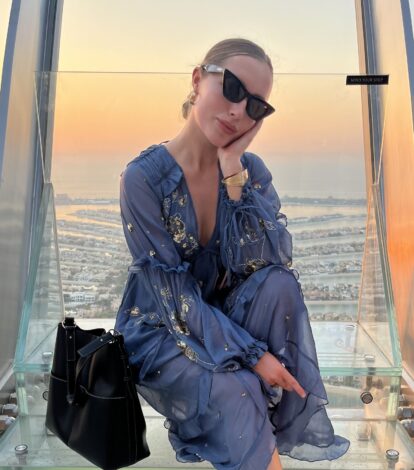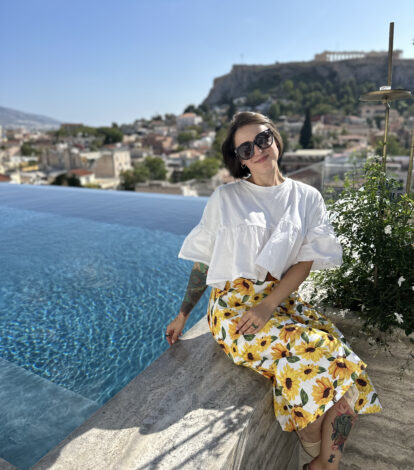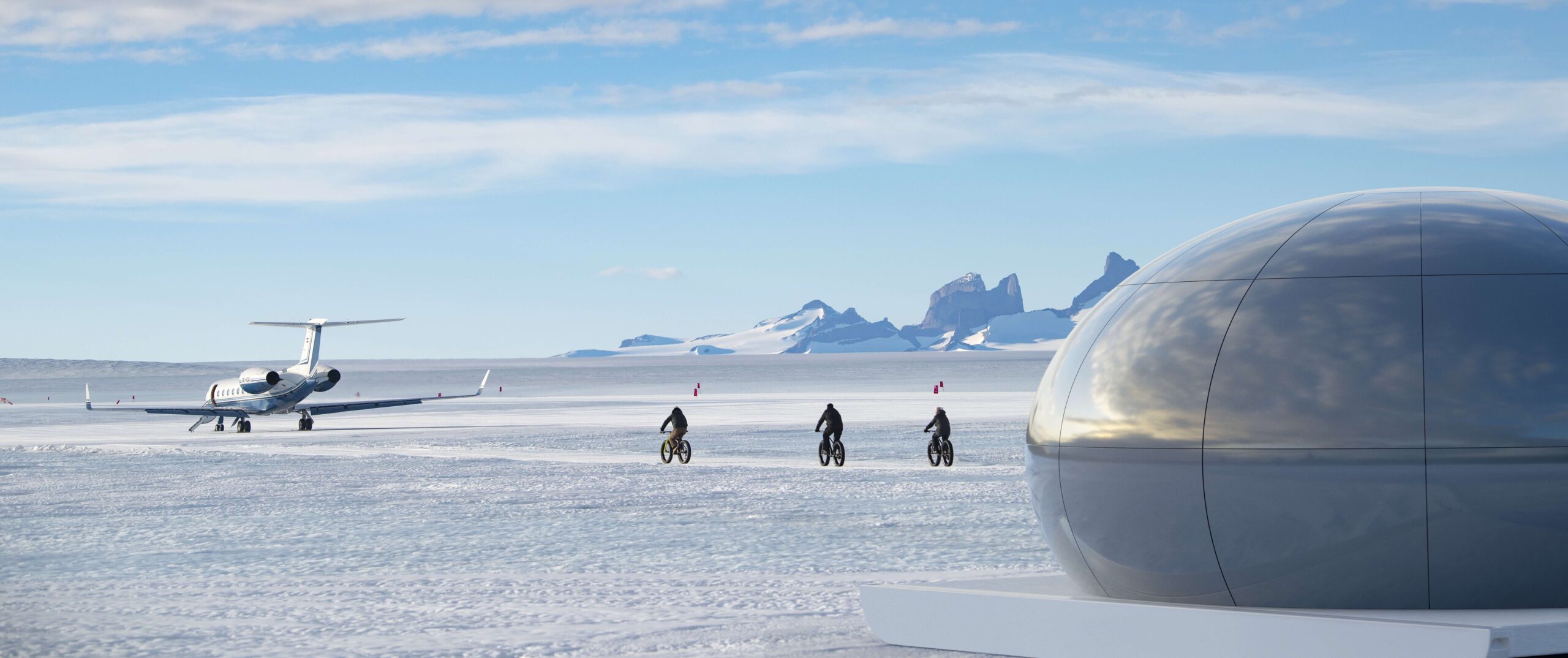Travel designer Filip Pačes just returned from his first trip to Thailand.
“Thailand is a good destination for couples, also for families with older children, ideally teenagers. Thailand would also be great for friends who want to have an adventure and relax.
Thailand deserves a varied itinerary with several stops, taking advantage of all Thailand has to offer in one trip. Different destinations can be combined depending on interests, like temples, the city and the beach.

Logistics and Planning a Thai holiday
“Thailand is a diverse destination where you can easily combine culture, gastronomy, nature and beach relaxation” says Filip.
Filip flew from Prague to Bangkok with Qatar Airways via Doha. There are regular direct flights between most major Thai destinations, so combining destinations is generally straightforward. More distant destinations can be connected on flights via Bangkok.
A travel designer’s expertise and experience is always beneficial when choosing hotels and specific rooms, but this is doubly true in Thailand.
“In Thailand, hotel stars don’t carry much weight,” says Filip. “We experienced excellent five-star hotels, but also stayed in a terrible hotel that I wouldn’t recommend to anyone, regardless of its five stars.”
The price and stars may be the same and they can all look good online, yet the quality varies immensely. Personal inspection is the only way to know.
As a travel designer, Filip knows how to best plan travel logistics and end a holiday with the best experience.
Here is Filip’s Thailand trip report, following an itinerary from Bangkok to Chiang Mai, then the beaches at Krabi, Ao Nang and Koh Kood.
It also includes some additional information from EliteVoyage co-owner David Eder, a multi-time visitor to Thailand, who has recent experience at other hotels in the country.
Bangkok

“Bangkok is a huge metropolis where most Thailand holidays inevitably begin and end. It’s better than being a necessary evil, but the first impression was a bit of a shock.
The Thai capital is quite overwhelming for the senses, if only because motorbikes and tuk tuks are noisier than cars. As Europeans we are used to exploring on foot – we exit the hotel and go for a walk. But the Bangkok streets are chaotic and you usually need a taxi or tuk tuk to go somewhere. This reminded me a bit of Dubai. It’s fine for a night or two though.
Bangkok is an Asian capital of many faces and contrasts: chaos, smog, but also lots of dining and shopping options.
I would definitely visit Bangkok at the start of a trip rather than the end. Spending time here would be a nasty shock after the zen and relaxation of a beach.
Bangkok Hotel Inspections
Four Seasons Hotel Bangkok at Chao Phraya River

This Four Seasons really performs. Minimalist architecture, simple lines and neutral interiors create a counterpoint to the chaotic city. The sprawling hotel benefits from a great location and we experienced excellent service.
Nearby is the historic Talat Noi district and main Charoen Krung Avenue, packed with shops and cafes. I recommend the Riverview rooms, which have super vistas over the waterfront.
The outdoor pool is a nice place to relax after a long flight. There is also a sports pool next to the gym. Breakfast was one of the best we experienced in Thailand, with an in-house bakery, varied selection, and all-round top quality. The hotel also has its own gallery.
The advantage of a riverside location is you can easily avoid the noisy streets and get around town by boat, using the hotel’s river shuttle.
Rosewood Bangkok

Rosewood Bangkok is located in a modern part of the city that smells more like business than history. It represents the luxurious face of contemporary Bangkok: skyscrapers, glass, steel, great dynamism and energy on the streets.
I recommend this hotel to clients who aren’t interested in the old city, river and temples. It’s for clients who like shopping and want to enjoy fine dining in the evening. It’s also a good choice for a business trip.
The breakfast here was great too, including an excellent bakery. But overall, the Bangkok Rosewood strikes me as the type of hotel where you go primarily to sleep, then spend most of your days out in the city.
The Siam Hotel

The glass-walled hall of this calm oasis resembles a botanical garden. All the common areas are adorned with art and sculptures. The original owner was an avid collector and amassed an impressive 15,000 pieces!
The hotel creates a charm of its own, as art deco meets Asia – dark wood contrasted against white surfaces, understated elegance, ubiquitous art and vegetation.
There are many visual and atmospheric references to Thai history, and guests have access to a beautiful library, cinema and vinyl-playing music room.
The Siam is a little further from the city centre, but offers a complementary shuttle to anywhere in the city, with stops wherever you wish, in addition to a fixed route. Boats are the most peaceful way to get around Bangkok and The Siam also provides this, as it’s located on the river.
There are two restaurants – Thai Chon, housed in original teak houses, and The Story House, designed by Bensley Studio, which serves global cuisine. There are also two bars right by the river.
Rather than a classic hotel, Siam is more like an urban resort. For me, it’s a good choice if you want to relax at the end of a trip and have a night or two before flying home.
Mandarin Oriental, Bangkok, by David Eder

For me, Mandarin Oriental, Bangkok is one of the finest hotels in all of Asia. It opened as the Oriental hotel and was one of the two hotels that started Mandarin Oriental as a brand.
You can feel this history in the service and overall quality. It’s definitely the best and purest Mandarin Oriental experience I’ve had anywhere in the world.
The riverfront location is idyllic and convenient, the riverside breakfast is stunning, and there’s such warmth to the service. Overall it’s a very solid choice for anyone visiting Bangkok.
Chiang Mai

Buddhist temples, tranquillity and elephants – that’s the essence of Chiang Mai.
Chiang Mai is compact so it’s easy to forget that it’s Thailand’s second largest city. It essentially offers everything, including night markets.
After Bangkok, Chiang Mai impressed us as an oasis of peace and greenery. It is Thailand’s city of temples, with more than 300 dotted around. There’s also a distinct café culture and a cosmopolitan atmosphere.
The centre is defined by narrow streets, lots of cafes and hipster venues. The architecture has a village-like feel, with banana trees growing between the houses and the aroma of incense sticks wafting through the air.
Digital nomads mingle with Buddhist monks in orange robes on the streets. Cute Thai women stand in unison summoning passers-by for massages. You feel both the bustle of a city and a Zen-like calm.
In the surrounding countryside there are treks to waterfalls and forests, but be aware that transfers take a lot of time. If you’ve experienced big national parks in the USA you might be underwhelmed.
Chiang Mai’s big highlight in nature is elephants, which you can visit at elephant sanctuaries. It’s essential to know where you are going. Some farms and parks have very dubious ethics and are using elephants simply to cash in on tourists. Still, there are good places I can recommend, where they really help and care for elephants.
Personally, I would combine two different hotels in Chiang Mai and spend two nights in each. Then leave the program more or less open. Cafes, temples, tuk tuk explorations, elephants…
Rachamankha

Rachamankha is a specific hotel, designed so guests can happily spend a whole day relaxing on property. It’s for guests who want calm and the immersion in a meditative atmosphere… then perhaps head into town for a walk and a coffee.
Most guests are couples without children and they seemed quite sophisticated. They’d spend half a day by the pool with a book and then get a massage. The hotel is a complex of old teak houses with some basic facilities. It’s not a Four Seasons or a Mandarin Oriental.
Luxury here is all about atmosphere. And Rachamankha actually profiles itself this way. It’s not trying to please everyone, it wants clients who feel they belong here.
The rooms were designed by the original owner and architect, so as not to disturb a meditative state. They are arranged around a central garden and the layout is somewhat reminiscent of monastic cells. They are comfortable and exude a certain purposeful simplicity – nothing distracts you, nothing calls for your attention. It’s not for everyone, but it’s perfect for some.
Breakfast was somewhat limited, but lunch was delicious and felt historic. Everything from the crockery to the historical objects, the temple relics, the furniture and the lighting has a touch of the past. It evokes an almost spiritual atmosphere.
137 Pillars House

Rachamankha is a great choice if you want to soak up the temple atmosphere of Chiang Mai. However, there are other options if you feel it’s not for you.
The best choice is probably 137 Pillars House, where you’ll find a similar level of authenticity as well as all the luxuries. I didn’t have time to check it out personally, but we get very positive feedback from our clients.
Four Seasons Resort Chiang Mai, by David Eder

Personally I found this resort to be a disappointment. It feels very dated now and the accommodations suffer from a lack of natural light.
The location is inconvenient too. It’s out in the jungle and rice paddies, so there are some nice experiences to do in the area. But it’s 30 to 45 minutes away from Chiang Mai, where there is so much to experience.
I wouldn’t only stay at Four Seasons Resort Chiang Mai because it would mean missing out on the main Chiang Mai experience. It’s an option for two nights in combination with staying at another hotel in the old part of the city.
Krabi and Ao Nang

If your idea of Thailand is something like the film The Beach, Krabi and Ao Nang will charm you. The scenery is gorgeous. But the infrastructure isn’t quite ready for discerning clients and there isn’t a top selection of luxury hotels like other destinations.
Impressive limestone formations rise out of the sea and we discovered some beautiful secluded beaches. However, it felt like locals were really trying to take advantage of tourists.
Ao Nang is a small town with lots of tourist attractions, where you’ll see lots of backpackers, climbers and hippies. The nightlife scene is good too, but the area also retains a certain amount of authenticity.
Beautiful beaches like Railay, Tonsai and Princess are accessible by boat. You pass limestone formations, among which wooden barges with DIY motors bob on the emerald green water – just a typical Thai vibe.
Banyan Tree Krabi

A secluded end-of-the-road location and large grounds help give a pleasant sense of space at this sprawling resort.
There are only 72 rooms and villas, generously spread out on the cascading terrain. Views depend on location. Our room had a partial ocean view. Villas with private pools are positioned closest to the ocean at the mouth of the river. You can cross the river by ferry which is a novel experience.
The villa design is from an older era, but inside they are spacious, well equipped and didn’t feel dated or run down.
The service was great and the staff are well trained. This was also true in the Saffron restaurant and during the plentiful breakfasts we enjoyed.
One highlight is a beautiful private beach, where limestone formations decorate the horizon and the sky changes colour every hour.
The resort is able to arrange decent private island cruises and other boat trips. For me, this is the best option on the mainland, around Krabi and Ao Nang.
Six Senses Yao Noi, by David Eder

Six Senses Yao Noi is located on Ko Yao Noi island, across the bay from Krabi on the mainland.
The main highlight is the same – access to the beautiful bay with its limestone formations and many beaches.
Unfortunately, the sea around the island wasn’t clean during our recent visit. Floating garbage, from who knows where, is ruining what was once an untouched natural wonder.
There are still some amazing places you can visit on a private boat tour. Also, the situation might be different at other times of the year, depending on currents. But you should be prepared for the area not being pristine.
Still, the resort itself is very good, with nice villas and a barefoot vibe.
Koh Kood

This beautiful untouched island is Thailand’s fourth largest and is almost 70% covered by rainforest. It gave us a completely different atmosphere from the rest of the country.
You get the feeling that there are no tourists here, although of course there are, but it’s certainly not mass Thailand like elsewhere. Perhaps it’s also because without Soneva Kiri, getting here is quite difficult.
We travelled on the resort plane from Bangkok. Then were engulfed by the sounds of the rainforest and cicadas, which were at their loudest during our November visit. For me, it was the perfect last stop of the trip .
Koh Kood is often considered to be one of the final places places where authentic Thailand still remains.
It’s crossed by one main road running north to south and you won’t find any commercial shops or chains anywhere, just small businesses run by locals.

A few shacks line the road, where you pass only a few scooters or working pickup trucks. Plus the ubiquitous soundtrack of cicadas.
You can travel the whole island in a couple of hours with stops in the jungle, at waterfalls or in a fishing village where we had fresh catch from the sea. The beaches are completely different from Krabi: white fine sand and crystal clear water (kind of like the Maldives, but without the underwater life).
Soneva Kiri

As usual with Soneva, this is not a typical 5-star hotel. The emphasis is on sustainability.
Recycling is evident in everything. The resort has its own water treatment plant, grows its own food and even has a chicken farm.
Soneva Kiri literally grows out of the rainforest and the villas are very sensitively integrated into the island’s character. My architect girlfriend appreciated how the design respects local flora and fauna. The huge resort has been left mostly in a completely natural state, except that now it is criss-crossed by buggy paths.
There are no concrete superstructures here! Just villas made of tent canvas, bamboo and local materials.
Villa interiors provide comfortable facilities and all the necessary luxuries. All the “consumable” and potentially distracting items like switches or electronics are hidden into ingenious niches. But you have to take into account that nature takes centrestage. For example, the bathroom, although beautiful, is 100% outside in some villas.
Our one-bedroom villa was a massive 450 m2, which is much larger than most in the Maldives. The front indoor section had the bedroom and dressing room, but the rest of the space is outside. The Robinson Crusoe style suited us and we were thrilled to be so closely connected to nature. There are also some villas where all the facilities are inside.
For me, Soneva Kiri is an absolute must on a Thailand itinerary! It’s not cheap, especially in Thai terms, but the value for money is really top notch.
The quality of service, the location, the facilities, the overall style and attitude… no other Thai resort I experienced compares. I also really appreciated the barefoot style, which suits the island perfectly.
You can easily spend most of the day relaxing in the villa. The attention to detail is impressive and there’s also a lot to experience.
For example, you can go by boat to a beautiful private beach. I liked the observatory, in a location with minimal light pollution or smog. There’s a summer cinema on the water, chocolate room and ice cream parlour.
Soneva has its own private jet. The transfer to or from Bangkok takes approximately 1hr 20min and is actually a beautiful scenic flight, over rice paddies, the river, the sea and neighbouring Cambodia.
Your holiday in Thailand
Thailand is definitely a great destination for couples who have the time to really explore what the country has to offer.
Families with older children, ideally teenagers, will enjoy lots of different experiences in one trip.
I can imagine a group of friends going to Thailand not just to party, but rather to enjoy a combination of relaxation and adventure.
The ideal time to visit is during the European winter. Who will you travel to Thailand with?








































